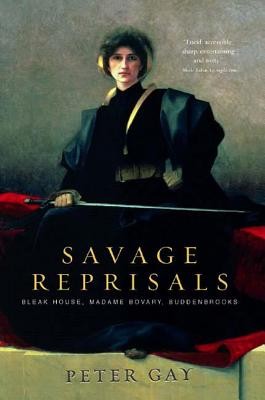
- We will send in 10–14 business days.
- Author: Peter Gay
- Publisher: W. W. Norton & Company
- ISBN-10: 0393325091
- ISBN-13: 9780393325096
- Format: 14.6 x 21.4 x 1.2 cm, minkšti viršeliai
- Language: English
- SAVE -10% with code: EXTRA
Reviews
Description
Focusing on three literary masterpieces--Charles Dickens's Bleak House (1853), Gustave Flaubert's Madame Bovary (1857), and Thomas Mann's Buddenbrooks (1901)--Peter Gay, a leading cultural historian, demonstrates that there is more than one way to read a novel.
Typically, readers believe that fiction, especially the Realist novels that dominated Western culture for most of the nineteenth century and beyond, is based on historical truth and that great novels possess a documentary value. That trust, Gay brilliantly shows, is misplaced; novels take their own path to reality. Using Dickens, Flaubert, and Mann as his examples, Gay explores their world, their craftsmanship, and their minds. In the process, he discovers that all three share one overriding quality: a resentment and rage against the society that sustains the novel itself. Using their stylish writing as a form of revenge, they deal out savage reprisals, which have become part of our Western literary canon. A New York Times Notable Book and a Best Book of 2002.
EXTRA 10 % discount with code: EXTRA
The promotion ends in 23d.09:47:54
The discount code is valid when purchasing from 10 €. Discounts do not stack.
- Author: Peter Gay
- Publisher: W. W. Norton & Company
- ISBN-10: 0393325091
- ISBN-13: 9780393325096
- Format: 14.6 x 21.4 x 1.2 cm, minkšti viršeliai
- Language: English English
Focusing on three literary masterpieces--Charles Dickens's Bleak House (1853), Gustave Flaubert's Madame Bovary (1857), and Thomas Mann's Buddenbrooks (1901)--Peter Gay, a leading cultural historian, demonstrates that there is more than one way to read a novel.
Typically, readers believe that fiction, especially the Realist novels that dominated Western culture for most of the nineteenth century and beyond, is based on historical truth and that great novels possess a documentary value. That trust, Gay brilliantly shows, is misplaced; novels take their own path to reality. Using Dickens, Flaubert, and Mann as his examples, Gay explores their world, their craftsmanship, and their minds. In the process, he discovers that all three share one overriding quality: a resentment and rage against the society that sustains the novel itself. Using their stylish writing as a form of revenge, they deal out savage reprisals, which have become part of our Western literary canon. A New York Times Notable Book and a Best Book of 2002.


Reviews